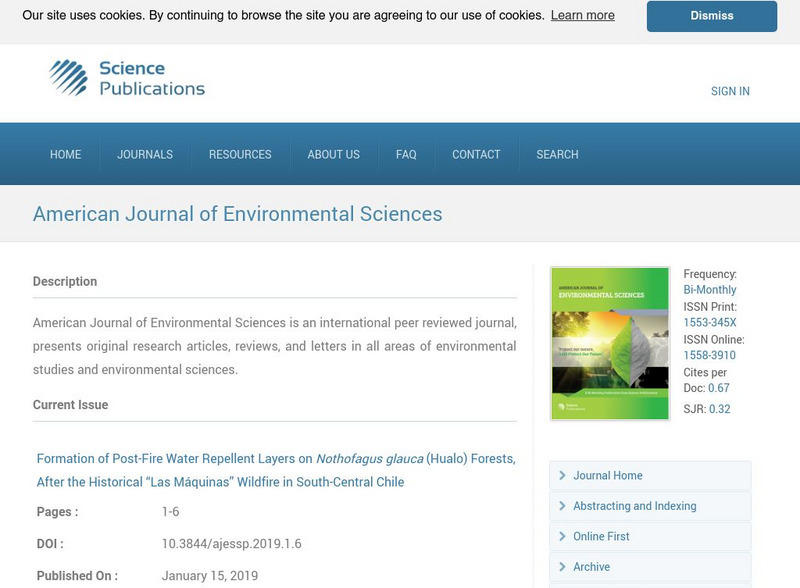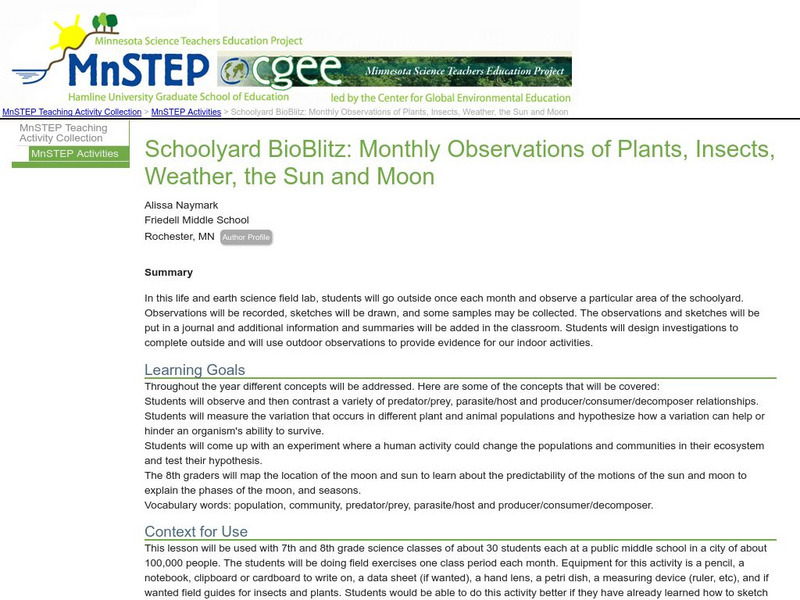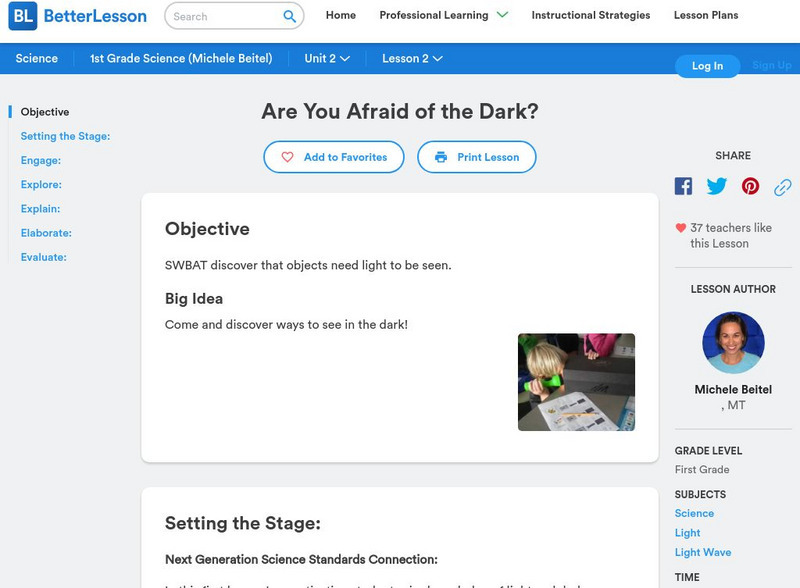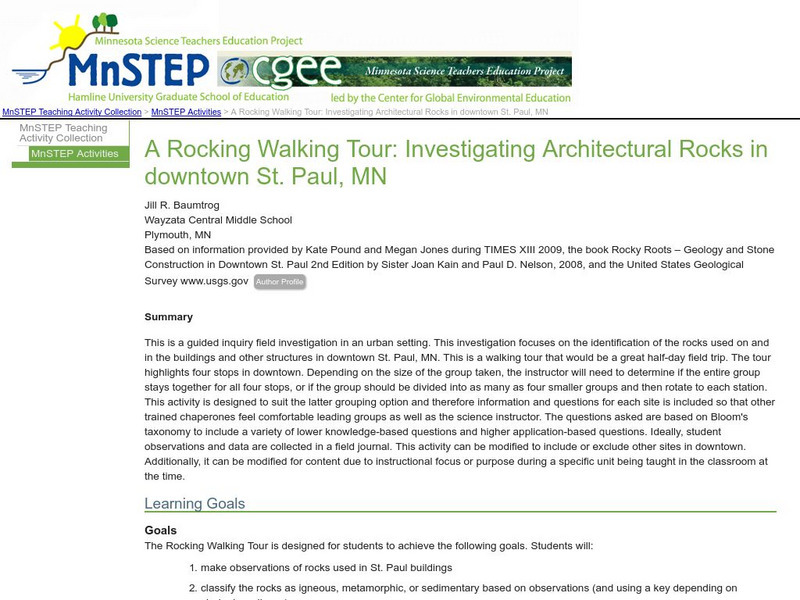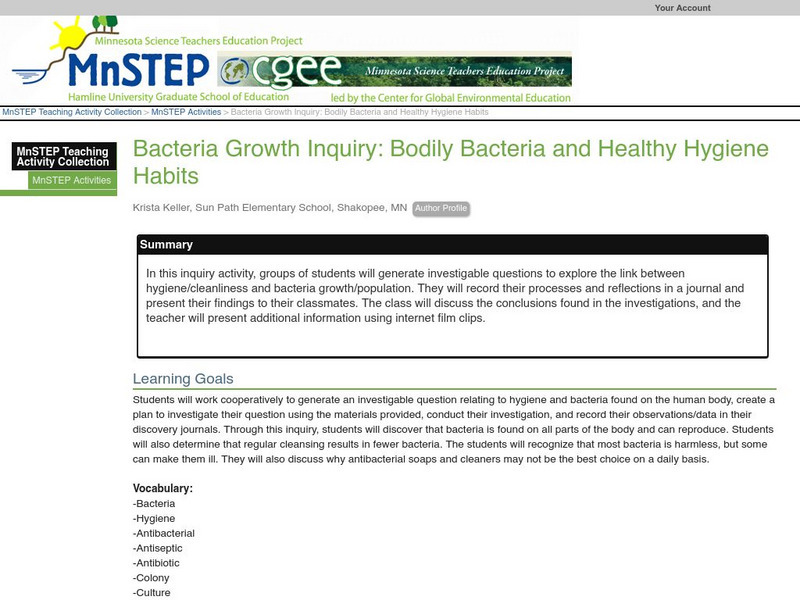Hi, what do you want to do?
Curated OER
Pollution Solution
Fourth graders examine how trees help to absorb the pollution that is emitted from automobiles. They review the process of photosynthesis and determine how forest management is important on their reservation. They think about the...
Curated OER
ESL: Journalism Article Comprehension
For this ESL comprehension worksheet, students read a passage, then complete a variety of warm-up and pre/post reading activities. Homework suggestions are included.
Vision Learning
Visionlearning: Understanding Scientific Journals and Articles
Explanation of the difference between popular media and scientific journals. Includes examples.
Vision Learning
Visionlearning: Scientific Communication: Utilizing Scientific Literature
A brief history of scientific literature, followed by different ways scientific literature can be used.
Other
Cambridge University: Chemistry Journals
This site is an index to over 2000 scientific journals in chemistry. Some journals require purchase, but many offer free articles or samples.
Other
Lund University Libraries: Directory of Open Access Journals
Open access journals are offered in all scholarly and scientific disciplines such as Biology and Life Sciences, History and Archaeology, and Physics and Astronomy. Site offers a search for new titles as well as archived journals....
Other
Voyages: Scientific Circumnavigations: Dampier
Read about the unlikely journals and observations of William Dampier, an English pirate who sailed the Pacific, making landfall in the Philippines, East Indies, and Australia. See his maps, descriptions of the Pacific, and observations...
Other
Science Publications: American Journal of Environmental Sciences
Browse through the current issue of an international peer-reviewed journal, which presents original research articles, reviews, and letters in all areas of environmental studies and environmental sciences.
PBS
Pbs Learning Media: The Zombie Autopsies: Publish or Perish, for Real
An excellent lesson plan where students are guided in how to write an article for publication in a scientific journal. Includes downloadable lesson plan and student handout.
Scholastic
Scholastic: Keep Your Own Field Journal
This site, which offers templates for field journals, is part of a larger, interdisciplinary site about New Zealand. Walks you through the process and purpose of a field journal for scientific observation.
Other
Hasselt University Library: Open Science Directory
A global search tool with access to over 13,000 scientific journals including open access journals and journals in special programs for developing countries.
Science Education Resource Center at Carleton College
Serc: Mn Step: Schoolyard Bio Blitz
For this activity, students visit a small section of the schoolyard and record observations in a scientific journal. They will observe different things as the school year progresses, including ecological relationships, human impact on...
American Museum of Natural History
American Museum of Natural History: O Logy: Stuff to Do: Keeping a Field Journal
Learn how to record observations about the wildlife in your community by constructing a field journal.
PBS
Pbs Teachers: Scientific American: Pieces of Mind: What's in a Dream?
Explore recent scientific investigations in sleep and dreams. Keep a journal to track sleep and dream activity, and find examples of ways sleep and dreams are used as images in popular culture.
PBS
Pbs Teachers: Scientific American: Prime Time Primates: The Mating Game
Emulate the work of primatologists by observing animals in a zoo environment. Record observations as entries in a journal, and prepare a final report of your conclusions.
Other
Jama: Evaluation of the Research Norms of Scientists and Administrators
This article describes a research study that looked at how professional scientists and representatives of scientific institutions rated research behaviors, in terms of how ethical they were, and at what punishments they would assign to...
Better Lesson
Better Lesson: Are You Afraid of the Dark?
Come and discover ways to see in the dark! Students will conduct an investigation on light and dark. The investigation will allow students to gather evidence on how items illuminate. Using cause and effect, the students will demonstrate...
Other
Proceedings of the National Academy of Sciences
The Proceedings of the National Academy of Science is a multidisciplinary journal that covers the biological, physical, and social sciences, and publishes research reports, commentaries, reviews, colloquium papers and actions of the...
Other
Loughborough Univ.: Young Children's Problem Solving in Design and Technology
This 1997 article from the Journal of Design & Technology Education at Loughborough University in the UK looked at the problem-solving strategies young children use in design and technology tasks, both independently and when working...
American Academy of Family Physicians
Aafp: American Family Physician
This is an online medical journal with information on various medical topics. Includes current issues, content collections, the CME quiz, featured articles, and the blog. Provides links to previous editions.
Science Education Resource Center at Carleton College
Serc: A Rocking Walking Tour: Investigating Architectural Rocks in St. Paul, Mn
This is a guided inquiry field investigation in an urban setting. This investigation focuses on the identification of the rocks used on and in the buildings and other structures in downtown St. Paul, MN. The questions asked are based on...
Khan Academy
Khan Academy: Swine Flu in Finland
In 2009, an outbreak of swine flu in Finland resulted in significant damage to the economy. Researchers investigated the potential cause of the disease. Through scientific experimentation, they were able to identify the disease as a new...
American Museum of Natural History
American Museum of Natural History: O Logy: Stuff to Do: Finding Fossils
Guidelines for investigating fossils in the field include specimen-finding strategies, dos and don'ts, examples of the kinds of fossils you may see, and other helpful information, such as how to record your observations and finds in a...
Science Education Resource Center at Carleton College
Serc: Bacteria Growth Inquiry: Bodily Bacteria and Healthy Hygiene Habits
For this inquiry activity, groups of students will generate investigable questions to explore the link between hygiene/cleanliness and bacteria growth/population. They will record their processes and reflections in a journal and present...












